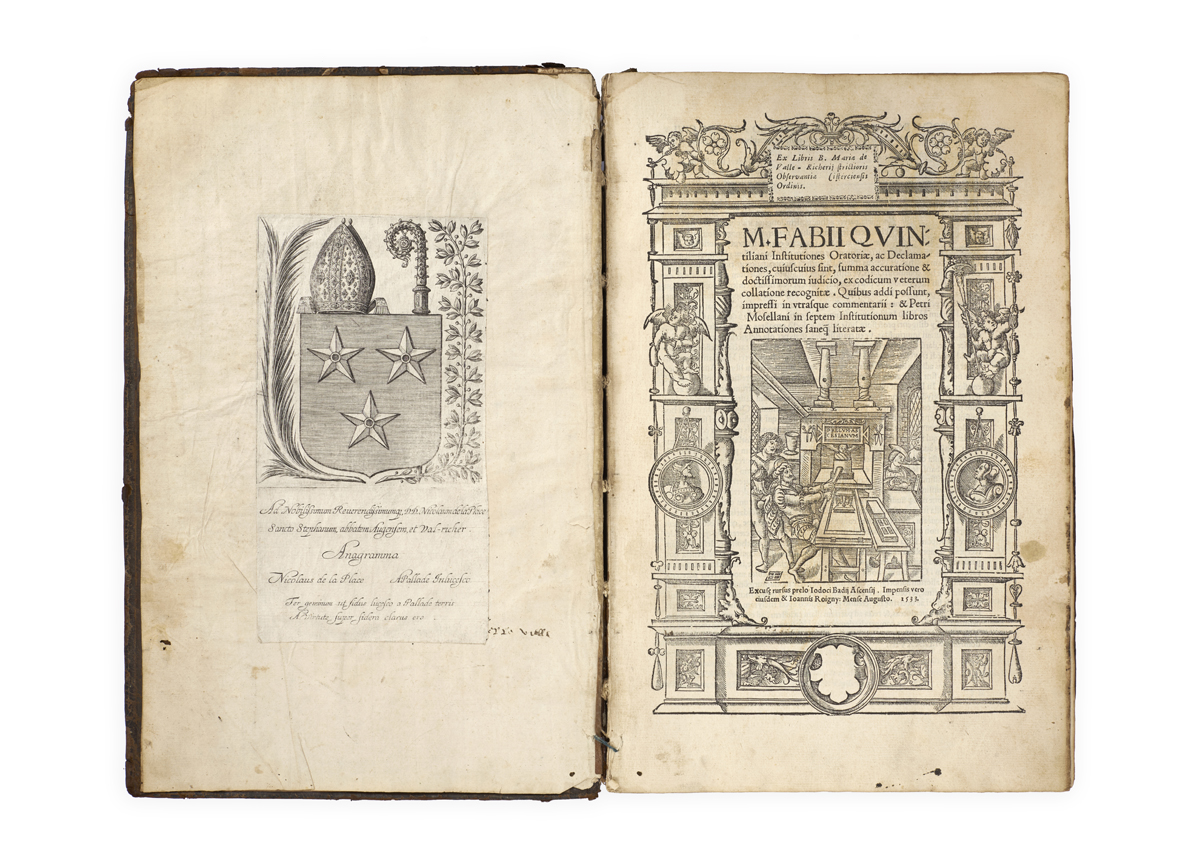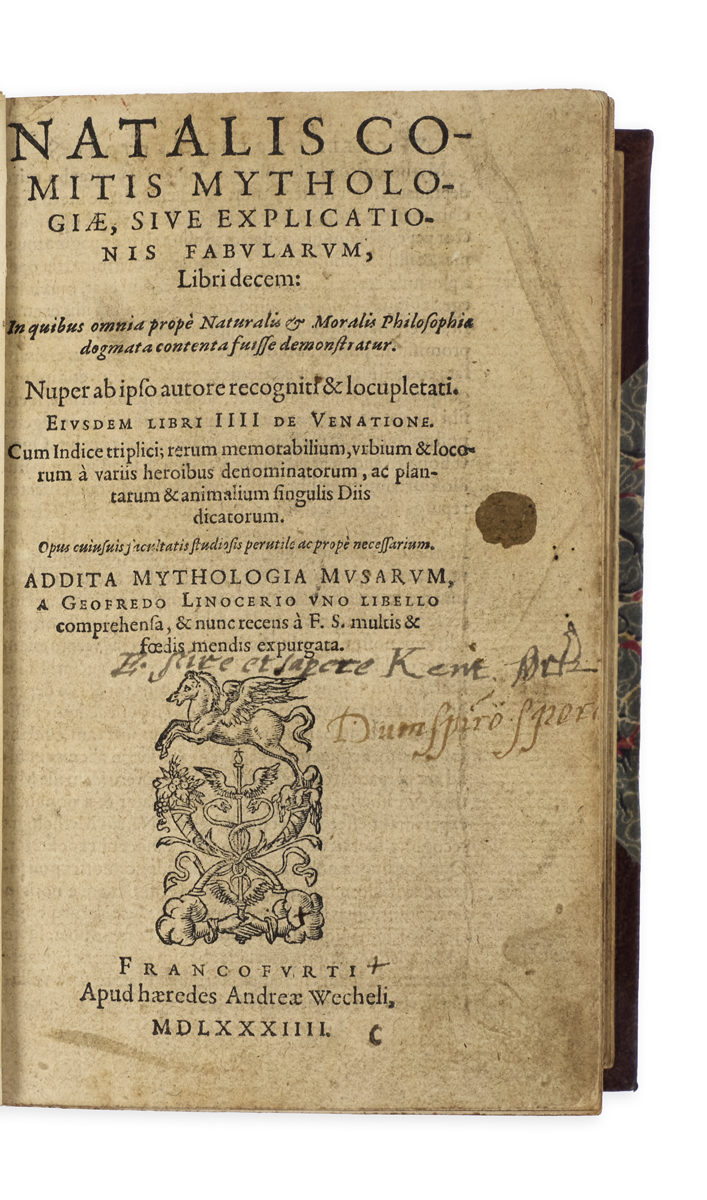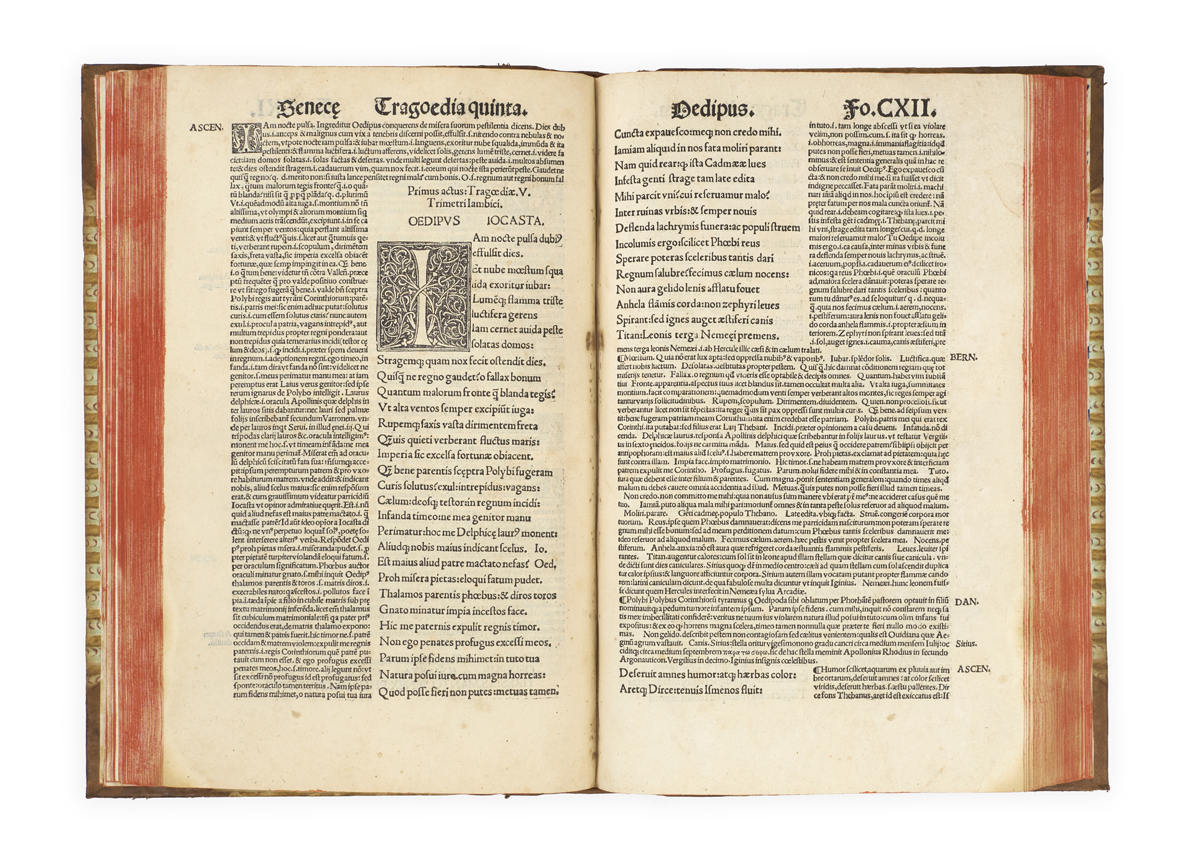
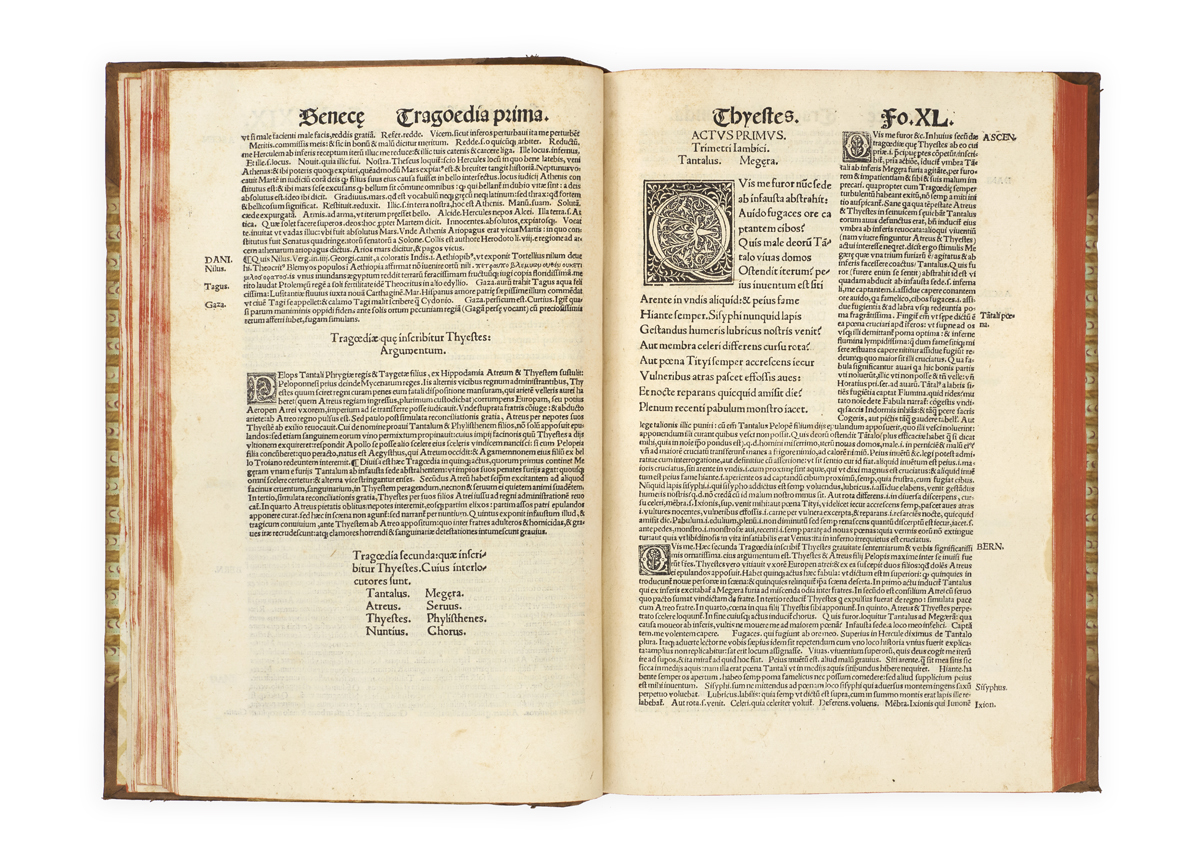

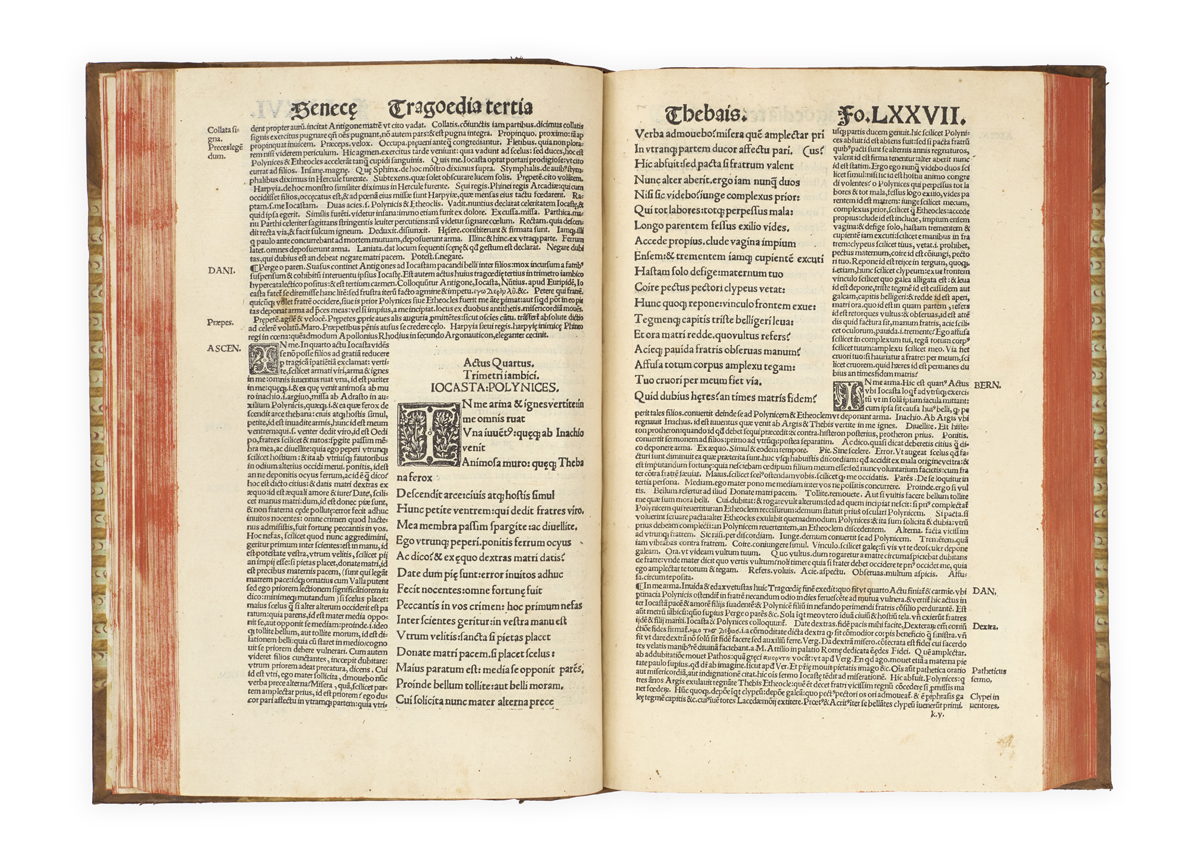
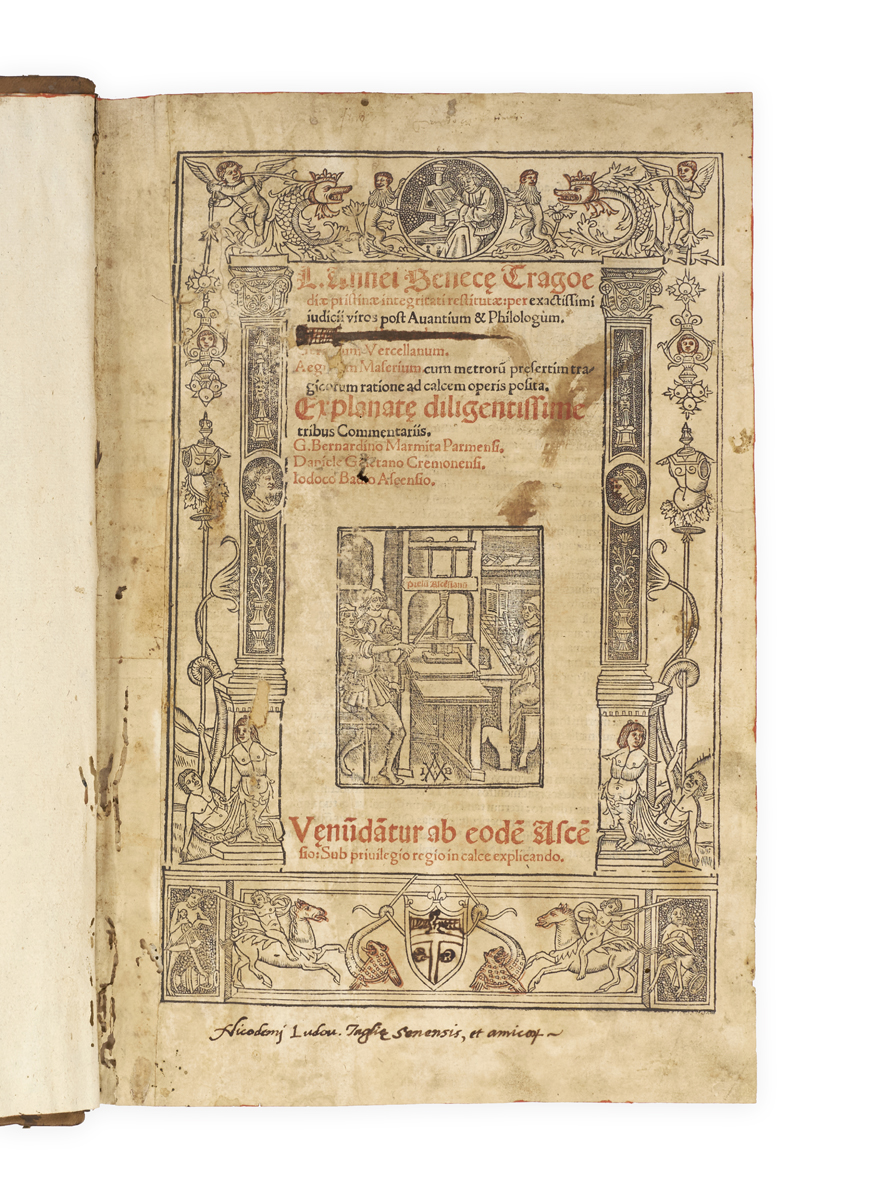
SENECA, Lucius Anneus.
Tragoediae pristinae integritati restitutae, per exactissimi judicii viros post Avantium & Philologum …
Paris, Badius Ascensius, 1514.
Folio, ff. [vi], CLXVII, [1]; title printed in red and black within woodcut border, woodcut device to title, large woodcut criblé initials; ‘D. Erasmum Roterodamum’ censored in ink from title; old reinforcement to title verso and inner margin (concealing Badius’s preface), a few light stains and minor worming to first and final leaves with a few old repairs, ink-stain to f. CXVv and occasional small marks elsewhere, closed tear to f. CLXXVI; a good copy in eighteenth-century mottled half sheep with patterned paper sides, gilt calf lettering-piece to spine, edges stained red, patterned pastedowns; lightly rubbed at extremities; escutcheon in lower border of title completed in ink with unidentified arms, seventeenth-century ink ownership inscription of Nicodemus Lodovicus Taglia of Siena to title.

Added to your basket:
Tragoediae pristinae integritati restitutae, per exactissimi judicii viros post Avantium & Philologum …
First edition edited by Erasmus and Badius Ascensius, a landmark in the history of Seneca’s textual tradition. This key work, the product of a collaboration between two wholly committed humanists, cannot have been accomplished without some friction: Erasmus had allowed Badius to make use of his preparatory work, and in his autobiographical letter to Botzheim he recalls the painstaking study involved in such preparation and affords the reader a brief insight into his own pique on noting that Badius ‘nostra cum alienis miscuisse’, had mixed his contribution with those of others (seven names appear on the title-page).
Seneca’s dramatic corpus, a body of nine closet (that is, intended for private reading rather than for the stage) tragedies, had recently been rediscovered. They soon became the models for the revival of tragedy on the Renaissance stage, inspiring both lines of future dramatic developments: French Neoclassical tragedy and Elizabethan tragedy.
Renouard, Badius Ascensius III, 252; Schweigher II, 938.
